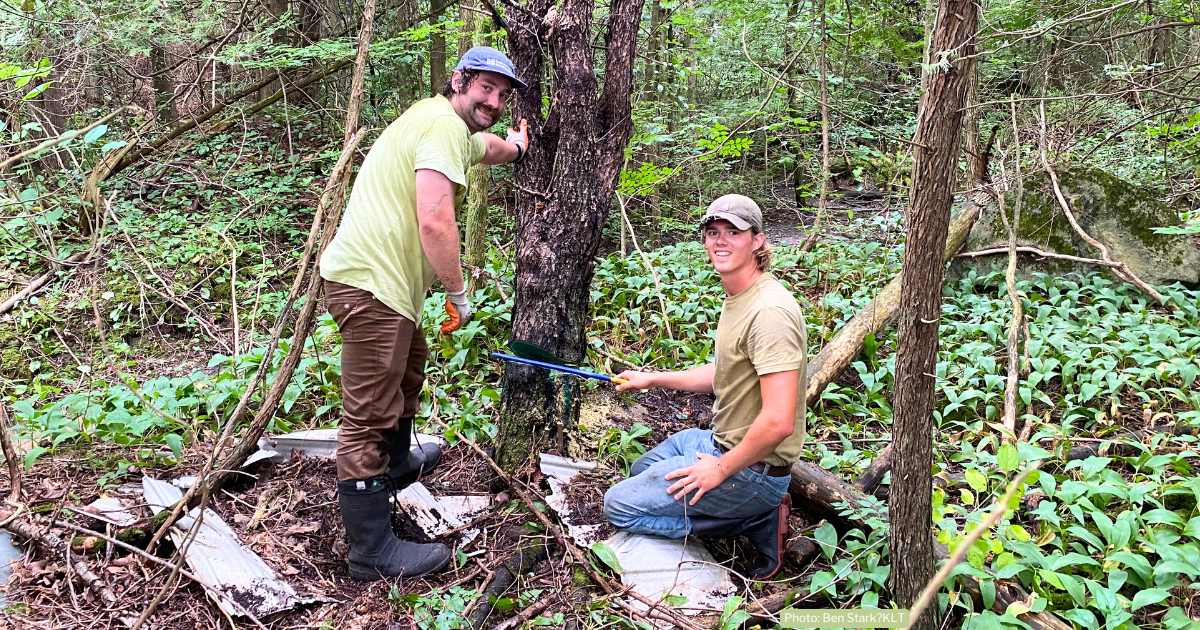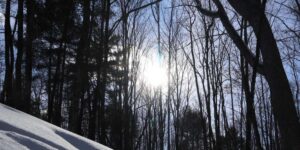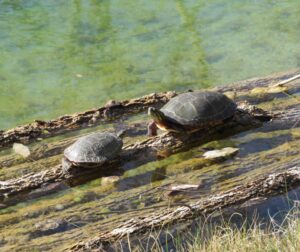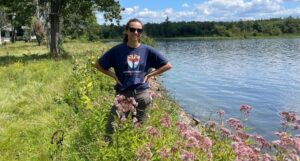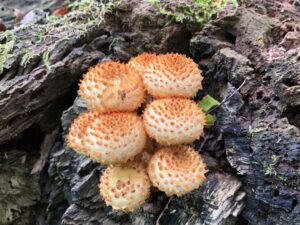This past summer, our amazing field team worked through heat, bugs, and rain to care for the land you (and they) love. As field season winds down, we wanted to share some field notes from Land Stewardship Technician Adam Groth, so that you can gain some insight into his experience on the land and the work you support.
Adam Groth, Land Stewardship Technician
This summer, I had the incredible opportunity to work as a Land Stewardship Technician with Kawartha Land Trust (KLT) where I was involved in a variety of stewardship activities. My work focused on preserving and enhancing the natural beauty and ecological health of many sites throughout the Kawarthas.
One of my main responsibilities was participating in habitat restoration projects. I worked with a dedicated team to remove invasive plant species impeding the growth of native plants in the environment. This effort is an essential step to restoring balance to these ecosystems, and it was rewarding to see the positive impact our work had on the sites we worked at.
I also took part in ongoing land management tasks, such as maintaining KLT’s public trails, monitoring wildlife, and conducting ecological inventories of KLT’s new and older protected lands to get an updated idea of the sites and the flora and fauna inhabiting them.
This hands-on work allowed me to witness the broad diversity of species that call the Kawarthas home. The work I’ve been doing has given me the chance to put what I’m learning in school into practice and see the concepts I’ve studied come to life in real-world situations.
The extensive number of different ecosystems, all with their own unique plant compositions and personalities, helped solidify many of the concepts I have learned and gave me a larger pool of experience to pull from when trying to understand new concepts as I progress my career as an environmental scientist.
One of my favorite moments while working at Kawartha Land Trust was a wildlife bioblitz at the Hammer Family Nature Preserve to learn more about this newly protected property that comprises an astonishing 1,400 acres. During the bioblitz, we recorded a number of plant and animal species at risk, including Black Ash and Eastern Meadowlark.
Seeing a Red-headed Woodpecker, in particular, was a privilege, knowing that few people ever get the chance to witness these birds in their natural habitat. It was a powerful reminder of why I’m doing this work — to give endangered species like this one a chance to thrive and hopefully rebound so that many others can see and enjoy them in the future.
I think this kind of stewardship work is important because it directly impacts the landscape and the communities that depend on it. The health of the land is intertwined with everyone’s way of life, and by caring for it, we ensure that these vital lands remain available for future generation
From everyone at Kawartha Land Trust, we offer our thanks to Adam for his many contributions to the land he loves this summer and wish him every success as he continues toward his career goal of becoming an Environmental Scientist.
Adam’s position was supported by Canada Summer Jobs and Ampere’s (formerly Pinnguaq) GreenWorks program – a digital skill development and employer program for businesses and individuals in the natural resources sector, or focused on natural resources-related work. This program is funded by the Green Jobs Initiative, in partnership with the Department of Natural Resources.
Photos: Main: (L-R) Colin Emerson and Adam Groth removing invasive Common Buckthorn (Ben Stark/KLT). Gallery: Toni Sunday and Adam Groth at KLT-managed John Earle Chase Memorial Park in Trent Lakes during a fieldwork day (KLT); 2024 field team photo at KLT’s Hammer Family Nature Preserve (KLT); Adam Groth and Rachel Barrington, KLT’s Partners in Conservation Coordinator, holding trays of seedlings. (KLT).

